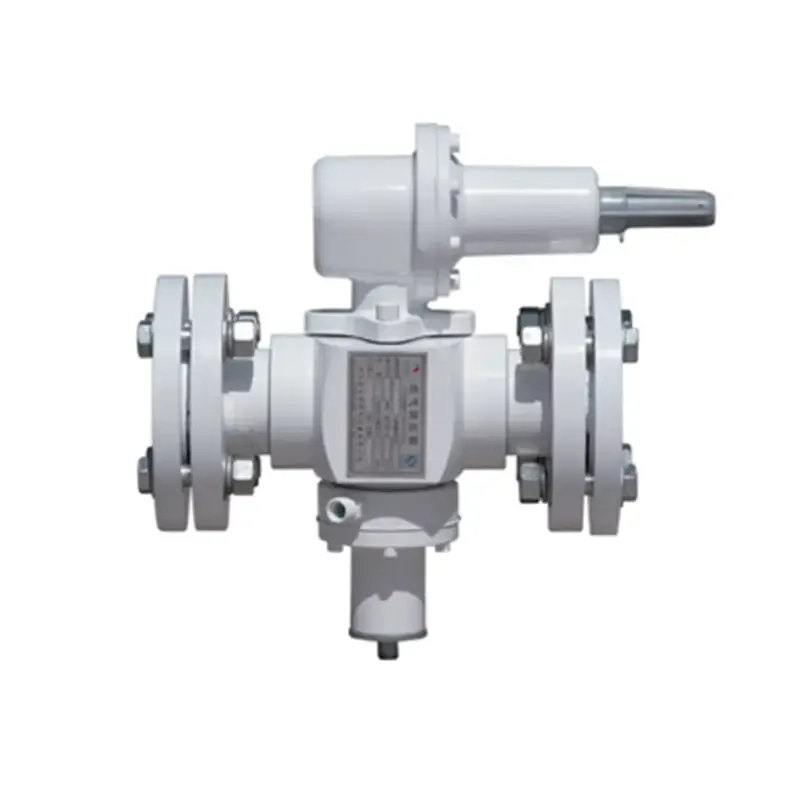
Dec . 04, 2024 16:30
Back to list
Understanding the Functionality and Benefits of Pressure Reducing Valves in Systems
Understanding Pressure Reducers Essential Components for Fluid Control Systems
Pressure reducers, often known as pressure regulators, are vital components in fluid control systems across various applications. They serve to maintain a consistent output pressure, regardless of fluctuations in the supply pressure or changes in flow rates. This capability makes them indispensable in industries such as plumbing, manufacturing, automotive, and pharmaceuticals, where precise pressure control is crucial for safety and efficiency.
What is a Pressure Reducer?
A pressure reducer is a mechanical device designed to reduce and stabilize the pressure of a fluid as it passes through the system. When high-pressure fluid enters the pressure reducer, the device functions to lower the pressure to a predetermined level, ensuring that downstream equipment or processes receive fluid at a safe and usable pressure.
Typically, pressure reducers consist of a valve mechanism, which modulates fluid flow, and a diaphragm or piston that responds to changes in output pressure. The adjustable set point allows users to customize the output pressure according to specific requirements, making these devices versatile for various operational needs.
How Pressure Reducers Work
The operational principle of a pressure reducer is fairly straightforward. As the high-pressure fluid enters the device, it pushes against a diaphragm or piston. If the resultant pressure exceeds the threshold set by the device, the diaphragm or piston moves to close the valve partially, thus reducing the flow of fluid. Conversely, if the pressure drops below the set point, the valve opens wider to allow more fluid to flow through, maintaining a consistent output.
This feedback mechanism is crucial for maintaining stable operating conditions. For instance, in a gas distribution system, a pressure reducer ensures that the gas pressure fed into household appliances remains consistent, even when competing demands arise, such as multiple appliances being used simultaneously.
Applications of Pressure Reducers
pressure reducer

Pressure reducers find extensive use across various sectors. In the construction and plumbing industry, they are commonly installed in water supply systems to prevent excess pressure from damaging pipes and fixtures. In industrial settings, they regulate process gases and liquids to ensure safe and efficient operation of machinery.
In the automotive industry, pressure reducers are used in fuel systems to manage the fuel supply to the engine, enhancing performance and fuel efficiency. Similarly, in the pharmaceutical and food industries, they ensure that liquid and gas processes maintain precise conditions, crucial for product quality and compliance with health standards.
Benefits of Using Pressure Reducers
1. Safety By controlling and stabilizing pressure, these devices help prevent system failures and hazards, such as explosions or leaks. They are essential for protecting both equipment and personnel. 2. Efficiency Maintaining optimal pressure levels improves the efficiency of fluid systems, reducing energy consumption and operational costs. This is particularly important in competitive markets where efficiency translates to profitability.
3. Equipment Longevity Consistent pressure helps extend the lifespan of connected equipment, as pressure spikes are a common cause of mechanical stress and wear.
4. Flexibility With adjustable settings, pressure reducers can be adapted for various applications, making them a versatile choice for multiple industries.
Conclusion
In summary, pressure reducers play a crucial role in ensuring the reliability and safety of fluid control systems across diverse applications. Their ability to regulate and stabilize pressure not only enhances operational efficiency but also contributes to user safety and equipment longevity. As industries continue to evolve and demand more precise and efficient fluid management solutions, the importance of pressure reducers will undoubtedly grow, marking them as indispensable tools in modern engineering and manufacturing. Understanding their functionality and applications is key for anyone involved in fields where fluid dynamics are critical.
Latest news
-
Safety Valve Spring-Loaded Design Overpressure ProtectionNewsJul.25,2025
-
Precision Voltage Regulator AC5 Accuracy Grade PerformanceNewsJul.25,2025
-
Natural Gas Pressure Regulating Skid Industrial Pipeline ApplicationsNewsJul.25,2025
-
Natural Gas Filter Stainless Steel Mesh Element DesignNewsJul.25,2025
-
Gas Pressure Regulator Valve Direct-Acting Spring-Loaded DesignNewsJul.25,2025
-
Decompression Equipment Multi-Stage Heat Exchange System DesignNewsJul.25,2025

